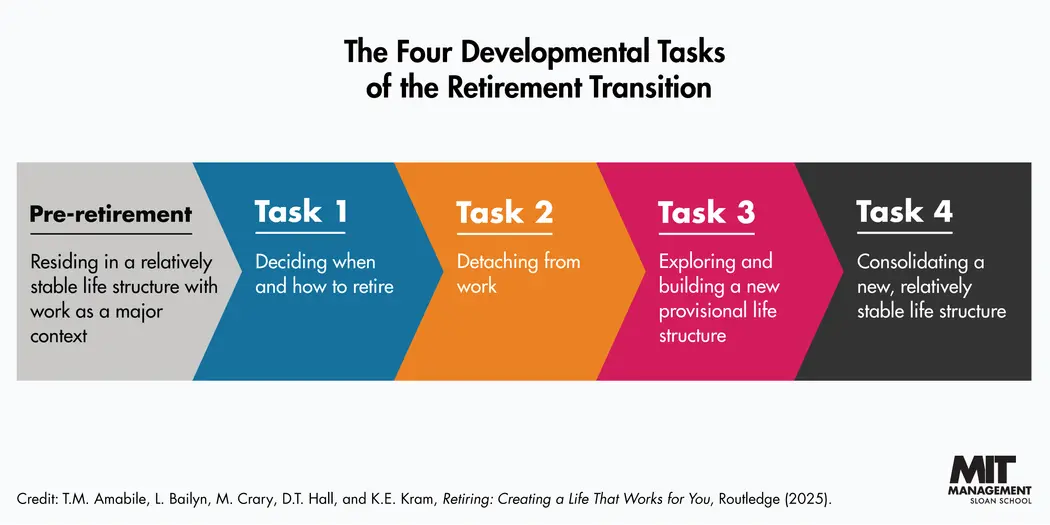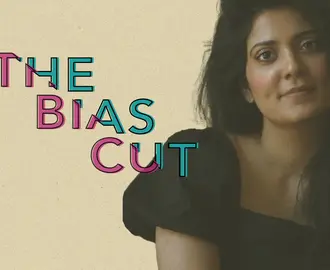Credit: Andrea Mongia
Whether they’re one of the 73 million baby boomers reaching their full retirement benefit age or Zoomers just entering the workforce, at some point most working Americans will retire. The optimal approach to retirement is unique to each person, but a new book, co-authored by MIT Sloan emeritus professor Lotte Bailyn, offers wisdom and anecdotes from more than 120 people and detailed interviews with 14 “Stars” regarding their retirement transitions.
“Retiring: Creating a Life That Works for You” centers around the concept of “life structure — the places you spend your time, the activities you undertake, and the people in whom you invest your energies.”
In the following excerpt, Bailyn and her co-authors — Teresa M. Amabile, Marcy Crary, Douglas T. Hall, and Kathy E. Kram — outline two big retirement lessons and describe the four tasks that must be tackled as part of the retirement process. It has been edited for length and clarity.
+++++
The first big lesson is that there is no single “best way” to retire. There is no template — a “good retirement” is one that suits you and remains viable for the foreseeable future, given your life circumstances.
There are many bridges to a satisfying retirement life and many unique elements to each retirement story. That’s appropriate, of course, given each person’s unique self and life circumstances. Regardless of the bridge they took or how long they took to get to the other side, nearly all the people we interviewed who had gone through retirement did end up at least reasonably satisfied with their retirement life.
The second big lesson, clear in every story we heard, is this: Retirement is a process that takes work. That work may be enjoyable, but it does require attention and energy. Rather than being a single event that happens on Retirement Day, it is a process that unfolds over time. The work of this process requires every retiring person to tackle the four developmental tasks of the retirement transition — beginning with the earliest thoughts about whether, when, and how to retire, and ending with the consolidation of a retirement life structure that is relatively stable and satisfying to the person.
Within all the uniqueness of our participants’ stories, this one common pattern stood out. The length of time it takes for people to accomplish each of these tasks varies widely, and some will return to earlier tasks, but everyone faces them at least once. The work of retiring requires discovering or creating resources and opportunities to meet the set of challenges that are likely to arise during each of these four tasks.
We observed an ongoing interplay, throughout this process, between “self” — the person’s sense of self at a given point in time — and their life structure. Each influences the other, and that mutual influence moves the process along from one task to the next. An overarching challenge, throughout all four tasks, is to assess your life structure on the two key dimensions of suitability (for you)and viability (for the foreseeable future). These are the hallmarks of what would make a satisfying retirement life that works for you. Might you want to make changes in any contexts of your life structure — your activities, relationships, places, groups, or organizations — to render it more suitable for who you are now — your identities, needs, and preferences? Or to render it more viable for the foreseeable future, given your circumstances? Might you want to make changes in yourself?
Now that you know about the constant interplay of self and life structure that serves as the dynamic force moving your retirement transition from one task to the next, you can more consciously think about how it applies to you. Think about who you are now and, at each phase of your retirement transition, think about the suitability and viability of your life structure. Then consider whether a different life structure — or a different version of yourself — might work better.
The main challenges of the first task, deciding to retire, include not only the “gating factor” of financial readiness but, in some cases, health. However, what turned out to be a more difficult sticking point for many of our Stars was neither health nor wealth but psychological readiness.
One of the most important dimensions to that readiness is identity, particularly the degree to which work or career is integral to a person’s sense of self. But there are other dimensions, too, such as the reluctance to leave meaningful or enjoyable work, the status and recognition that may come with holding a position in a particular organization, and the steady companionship of work colleagues and friends. Consider your own psychological readiness for retirement just as carefully as you consider your financial readiness.
The second task, detaching from work, brings challenges from a complex set of forces, including identity and relationships. Consider how new activities and interests, or further investing in existing activities and interests, might help you detach from work.
The challenges and opportunities of the third task — exploring, experimenting, and building a provisional retirement life structure — tend to involve other people in a big way. Of course, not every person needs the cooperation of others to do the work of this task. Consider how to approach the task of building your provisional retirement life, with a good mix of exploration, experimentation, and contemplation of how it’s all working.
During the fourth task, consolidating a relatively stable retirement life structure, many challenges can come from unexpected sources. If you’ve been exploring and experimenting in retirement life for some time, consider whether you’ve gained enough information about what’s working and what’s not to move toward consolidation.
Ultimately, it was in completing all four of these tasks that our Stars were able to create new and relatively stable life structures that aligned well with their current identities, needs, and preferences and seemed sustainable for the time being.
Excerpted from “Retiring: Creating a Life That Works for You,” by Teresa M. Amabile, Lotte Bailyn, Marcy Crary, Douglas T. Hall, and Kathy E. Kram. Copyright © Teresa M. Amabile, Lotte Bailyn, Marcy Crary, Douglas T. Hall, and Kathy E. Kram, 2025. Reprinted by permission of Routledge. All rights reserved.




